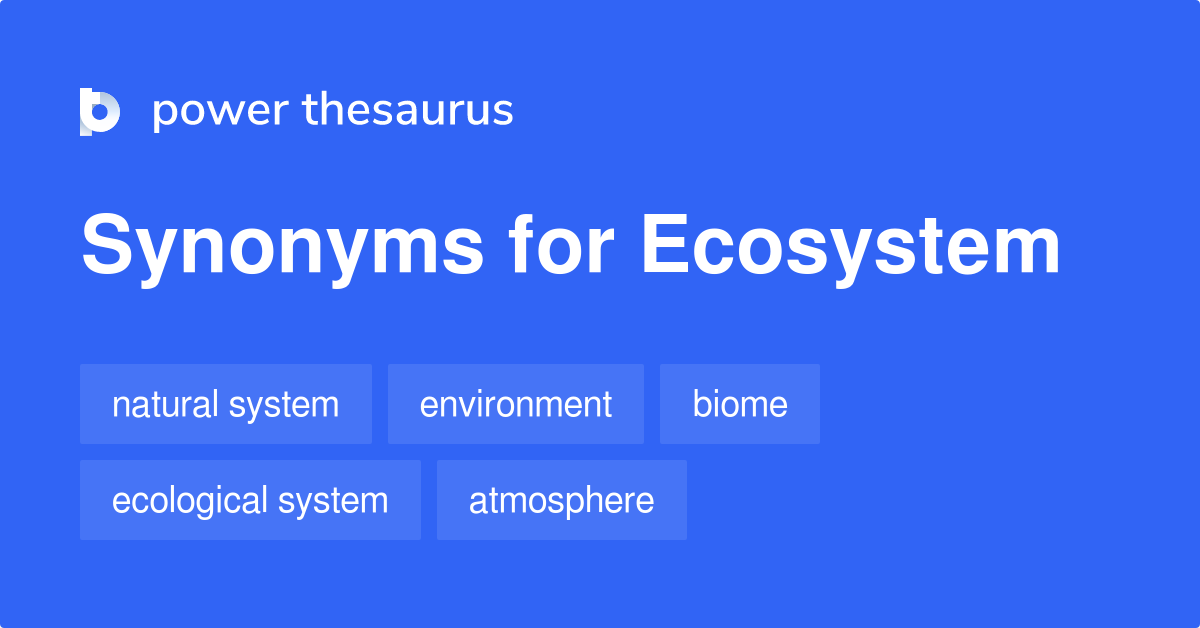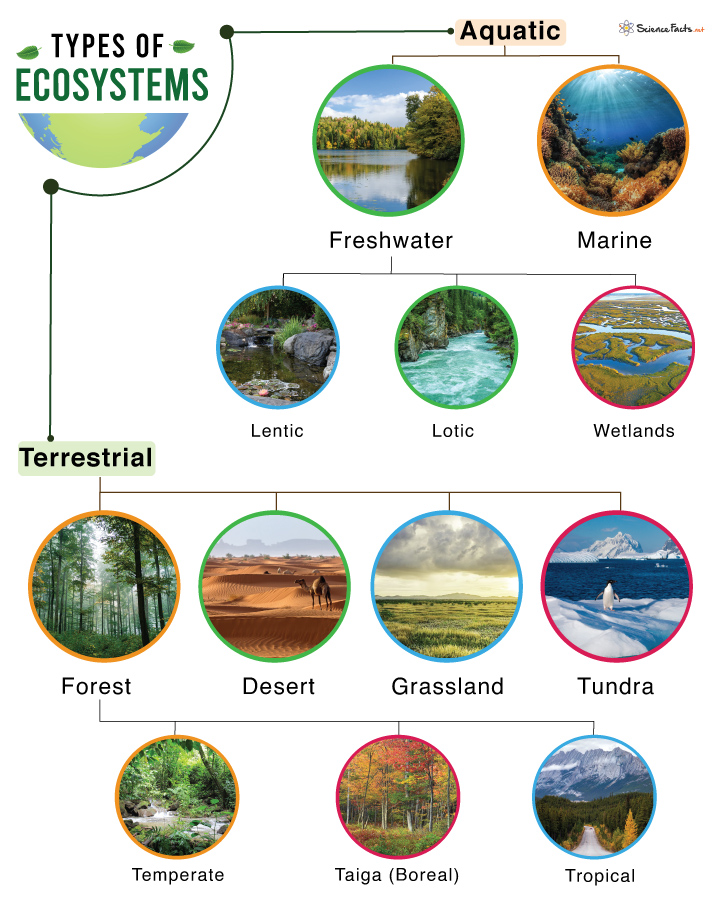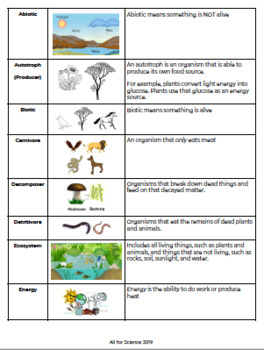Topic aquatic ecosystems definition: Dive into the depths of aquatic ecosystems, where life thrives in water"s embrace, uncovering their definitions, importance, and the critical role they play in our planet"s health.
Table of Content
- What is the definition of aquatic ecosystems?
- Definition of Aquatic Ecosystems
- Types of Aquatic Ecosystems
- Characteristics of Aquatic Ecosystems
- Importance of Aquatic Ecosystems
- Threats to Aquatic Ecosystems
- Conservation and Restoration Efforts
- YOUTUBE: Aquatic Ecosystems Definitions
- Role of Aquatic Ecosystems in Climate Regulation
- Biodiversity in Aquatic Ecosystems
- Human Activities and Their Impact on Aquatic Ecosystems
- Research and Studies on Aquatic Ecosystems
What is the definition of aquatic ecosystems?
An aquatic ecosystem is a type of ecosystem that is found in and around bodies of water, in contrast to terrestrial ecosystems which are found on land. It is a community of plants and animals that live in, on, or near water. Aquatic ecosystems can include freshwater ecosystems like rivers, lakes, and wetlands, as well as marine ecosystems like oceans and coral reefs. These ecosystems are characterized by their water-based environment and the specific species that have adapted to live in these habitats.
- Aquatic ecosystems can be divided into two main types:
- Freshwater ecosystems: These are found in bodies of water with a low salt content, such as rivers, lakes, ponds, and wetlands. They are home to a variety of species including fish, amphibians, aquatic plants, and invertebrates.
- Marine ecosystems: These are found in large bodies of saltwater, such as oceans and seas. They are characterized by high salt content and are home to diverse marine life including fish, whales, dolphins, corals, and sea turtles.
- Within aquatic ecosystems, there are different zones or regions:
- Littoral zone: This is the shallow area near the shore where light penetration allows plant growth. It is home to many aquatic plants and animals.
- Limnetic zone: This is the open water area where light penetrates. It is inhabited by various species of fish, plankton, and other organisms.
- Profundal zone: This is the deep and dark region of larger bodies of water. It is less populated by plants and is home to organisms adapted to low light levels.
- Benthic zone: This is the bottom of the water body, which may include sediment, rocks, and organic matter. It supports organisms such as benthic invertebrates, mollusks, and bacteria.
Aquatic ecosystems play a crucial role in maintaining the overall health and balance of the planet. They provide habitats for numerous species, contribute to the global water cycle, and help to regulate climate. Understanding and preserving these ecosystems is essential for the well-being of both aquatic organisms and humans.
READ MORE:
Definition of Aquatic Ecosystems
An aquatic ecosystem is a dynamic environment where living organisms interact with each other and their surroundings within a body of water. These ecosystems are primarily categorized into two types: freshwater and marine ecosystems. Freshwater ecosystems are found in rivers, lakes, streams, and wetlands, whereas marine ecosystems encompass oceans, seas, coral reefs, and estuaries. Each type supports a diverse range of flora and fauna, adapted to live in water conditions ranging from still and fresh to salty and flowing. Aquatic ecosystems play a crucial role in maintaining ecological balance, supporting biodiversity, and providing essential services such as water purification, habitat for species, and resources for human use.
- Freshwater Ecosystems: Characterized by a low salt concentration, supporting species adapted to these conditions.
- Marine Ecosystems: Known for their high salt content, home to a vast array of marine life and coral reefs.
Understanding the definition and classification of aquatic ecosystems is essential for appreciating their importance in global ecological balance and human well-being.

Types of Aquatic Ecosystems
Aquatic ecosystems are broadly classified into two main categories based on their salinity—freshwater and marine ecosystems. Each category encompasses a variety of ecosystems, each with unique characteristics and life forms.
- Freshwater Ecosystems: These include rivers, lakes, ponds, streams, and wetlands. Freshwater ecosystems are vital for the survival of many species, providing drinking water, habitats, and resources for animals and plants.
- Marine Ecosystems: Covering over 70% of the Earth"s surface, marine ecosystems include oceans, seas, coral reefs, and estuaries. They are known for their biodiversity and are home to numerous species of fish, mammals, and coral.
- Estuaries: Where freshwater meets saltwater, estuaries serve as nurseries for many marine species and act as filters for pollutants, improving water quality.
- Wetlands: Characterized by saturated soils or standing water, wetlands are crucial for water purification, flood protection, and supporting diverse wildlife.
Each type of aquatic ecosystem plays a specific role in the environment, contributing to biodiversity, climate regulation, and supporting life both in and out of water.
Characteristics of Aquatic Ecosystems
Aquatic ecosystems, whether freshwater or marine, share several key characteristics that define their environment and the life forms they support. Understanding these characteristics is crucial for the conservation and management of aquatic life.
- Water Composition and Quality: The salinity, pH levels, dissolved oxygen content, and temperature of the water greatly influence the types of organisms that can thrive in aquatic ecosystems.
- Light Penetration: The amount of sunlight penetrating water bodies affects photosynthesis in aquatic plants and the distribution of organisms at various depths.
- Depth and Pressure: Especially in marine ecosystems, depth influences pressure, temperature, and light availability, which in turn affects the types of species found at different layers.
- Biological Diversity: Aquatic ecosystems are known for their rich biodiversity, supporting a wide range of plant and animal species, from microscopic plankton to large marine mammals.
- Ecosystem Productivity: The primary productivity of an aquatic ecosystem depends on factors like nutrient availability and light, determining the overall biomass supported.
- Food Webs: Aquatic food webs are complex, involving various trophic levels from primary producers to apex predators, illustrating the interdependence of aquatic organisms.
These characteristics highlight the complexity and vitality of aquatic ecosystems, underscoring their importance in maintaining ecological balance and supporting life.

Importance of Aquatic Ecosystems
Aquatic ecosystems are crucial for the health of our planet, providing invaluable services to the environment and humanity. Their significance extends far beyond their beauty and biodiversity, impacting global ecological balance and human well-being.
- Supports Biodiversity: Aquatic ecosystems are home to a diverse array of species, many of which are unique to these environments. They serve as crucial habitats for fish, plants, invertebrates, and mammals.
- Regulates Climate: Oceans and large water bodies play a key role in regulating the Earth"s climate by absorbing carbon dioxide and influencing weather patterns.
- Provides Resources: Beyond supporting wildlife, aquatic ecosystems provide humans with food, medicines, and raw materials, crucial for economic and social development.
- Water Purification: Wetlands and other aquatic ecosystems filter pollutants from water, improving water quality and providing clean water for drinking, agriculture, and industry.
- Recreational and Cultural Value: Water bodies are important for recreational activities, cultural significance, and spiritual values in many communities around the world.
- Erosion Control and Flood Protection: Aquatic ecosystems like mangroves and wetlands protect coastlines from erosion and mitigate the effects of floods, safeguarding human settlements.
The preservation and restoration of aquatic ecosystems are vital for sustaining these benefits, highlighting the need for environmental stewardship and conservation efforts.
Threats to Aquatic Ecosystems
Aquatic ecosystems face numerous threats that can compromise their health, biodiversity, and the services they provide. Understanding these threats is the first step towards mitigating their impacts and preserving these vital habitats.
- Pollution: Water pollution from industrial discharge, agricultural runoff, plastic waste, and oil spills significantly degrades water quality, affecting both wildlife and human health.
- Climate Change: Rising temperatures and changing precipitation patterns affect water availability, ecosystem function, and species distribution, leading to habitat loss and altered food webs.
- Overfishing and Exploitation: Unsustainable fishing practices and exploitation of aquatic resources lead to the depletion of fish stocks and loss of biodiversity, disrupting aquatic food chains.
- Habitat Destruction: Urbanization, deforestation, and construction activities destroy aquatic habitats, leading to erosion, increased sedimentation, and loss of species habitats.
- Invasive Species: Non-native species introduced into aquatic ecosystems can outcompete native species, alter habitats, and disrupt ecological balance.
- Acidification: Increased CO2 levels in the atmosphere lead to ocean acidification, adversely affecting marine life, especially organisms with calcium carbonate shells or skeletons.
Addressing these threats requires global cooperation, sustainable management practices, and concerted conservation efforts to ensure the health and resilience of aquatic ecosystems for future generations.

Conservation and Restoration Efforts
Conservation and restoration of aquatic ecosystems are critical to reversing the degradation of these vital habitats and ensuring their sustainability for future generations. Effective strategies and actions are being implemented worldwide to protect and revive water environments.
- Protected Areas: Establishing marine and freshwater protected areas to conserve biodiversity, safeguard habitats, and ensure sustainable use of resources.
- Pollution Control: Implementing stricter regulations on industrial discharge, agricultural runoff, and waste management to reduce pollution and improve water quality.
- Restoration Projects: Undertaking projects to restore wetlands, rivers, coral reefs, and other aquatic habitats, including reforestation, removing invasive species, and rebuilding natural water flows.
- Sustainable Practices: Promoting sustainable fishing, aquaculture practices, and water use to reduce overexploitation and ensure the long-term viability of aquatic resources.
- Climate Change Mitigation: Engaging in efforts to reduce greenhouse gas emissions and enhance ecosystem resilience to climate change impacts.
- Community Involvement: Involving local communities in conservation efforts, raising awareness, and providing education on the importance of aquatic ecosystems and how to protect them.
- Research and Monitoring: Conducting scientific research and monitoring ecosystems to better understand their dynamics, threats, and the effectiveness of conservation measures.
Through these efforts, we can work towards a future where aquatic ecosystems continue to thrive, supporting biodiversity and benefiting humanity in countless ways.
Aquatic Ecosystems Definitions
If you\'re curious about learning the true meaning behind complex scientific terms, look no further! This captivating video breaks down definitions in a simple and engaging way, making it easy for anyone to understand and expand their knowledge. Prepare to have your mind expanded!
Aquatic Ecosystems
Dive into the mesmerizing world of aquatic ecosystems with this visually stunning video. Discover the wonders that lie beneath the surface as you explore the intricate web of life in rivers, lakes, and oceans. Get ready to be amazed by the beauty and diversity of these enchanting environments!
Role of Aquatic Ecosystems in Climate Regulation
Aquatic ecosystems play a fundamental role in regulating the Earth"s climate, serving as both a source and sink for greenhouse gases and influencing weather patterns across the globe. Their contribution to climate regulation is multifaceted and vital for maintaining the balance of our planet"s climate system.
- Carbon Sequestration: Oceans, seas, and freshwater bodies absorb and store large amounts of carbon dioxide from the atmosphere, helping to mitigate the effects of climate change.
- Heat Regulation: Large water bodies have a high heat capacity, absorbing and distributing solar energy, which regulates global temperatures and climate patterns.
- Weather Influence: Evaporation from aquatic surfaces contributes to cloud formation and precipitation, playing a crucial role in the hydrological cycle and weather systems.
- Albedo Effect: Ice-covered polar and glacial aquatic ecosystems reflect sunlight, helping to cool the Earth"s surface and moderate global temperatures.
- Supporting Biodiversity: Aquatic ecosystems support diverse life forms that contribute to the global carbon cycle, including plankton that absorb CO2 during photosynthesis.
The protection and restoration of aquatic ecosystems are essential for enhancing their role in climate regulation, highlighting the need for global conservation efforts to address climate change challenges.

Biodiversity in Aquatic Ecosystems
Aquatic ecosystems are among the most biodiverse environments on Earth, hosting an astonishing variety of life forms. From microscopic organisms to the largest marine mammals, the biodiversity within these habitats is crucial for ecological balance and the health of our planet.
- Microorganisms: Phytoplankton and zooplankton form the base of aquatic food webs, playing a key role in nutrient cycling and energy transfer.
- Invertebrates: A vast array of invertebrates, including corals, sponges, and shellfish, contribute to the structural complexity and productivity of aquatic ecosystems.
- Fish: Fish species vary widely across different aquatic habitats, from freshwater rivers and lakes to the vast expanses of the ocean, serving as a vital source of food for many predators, including humans.
- Aquatic Plants: Aquatic plants, such as seaweeds, mangroves, and freshwater grasses, provide oxygen, shelter, and food for numerous species, in addition to stabilizing sediment and improving water quality.
- Mammals: Marine mammals like whales, dolphins, and seals rely on aquatic ecosystems for their survival, playing important roles in maintaining the health and balance of marine environments.
- Birds: Many bird species depend on aquatic ecosystems for nesting, feeding, and migration stopovers, linking aquatic and terrestrial ecosystems.
The rich biodiversity in aquatic ecosystems is vital for their function, resilience, and the services they provide to humanity. Protecting this biodiversity is essential for sustaining life both in and out of water.
Human Activities and Their Impact on Aquatic Ecosystems
Human activities have profound impacts on aquatic ecosystems, often leading to degradation and loss of biodiversity. While some impacts are direct and visible, others are more subtle, affecting the very functioning of these ecosystems.
- Pollution: Discharges from industrial, agricultural, and domestic sources introduce pollutants such as chemicals, plastics, and heavy metals into water bodies, threatening aquatic life and water quality.
- Overfishing: Unsustainable fishing practices deplete fish stocks, disrupt food webs, and cause the decline of important species, affecting the entire aquatic ecosystem.
- Habitat Destruction: Development activities, such as urban expansion, agriculture, and dam construction, lead to the destruction and fragmentation of habitats, resulting in loss of species and ecosystem services.
- Climate Change: Increased greenhouse gas emissions contribute to climate change, leading to rising sea levels, ocean acidification, and temperature changes that affect aquatic species and habitats.
- Invasive Species: The introduction of non-native species can outcompete, prey on, or introduce diseases to native species, disrupting ecological balance.
- Resource Exploitation: The extraction of resources such as oil, gas, and minerals from aquatic environments can lead to pollution, habitat destruction, and negative impacts on marine and freshwater ecosystems.
Addressing the impact of human activities on aquatic ecosystems requires a concerted effort from global to local levels, including policy changes, conservation initiatives, and sustainable management practices to ensure the health and resilience of these critical habitats.

READ MORE:
Research and Studies on Aquatic Ecosystems
Scientific research and studies play a crucial role in understanding, conserving, and managing aquatic ecosystems. These efforts are essential for uncovering the complexities of water environments, assessing the impacts of human activities, and developing strategies for sustainability.
- Ecological and Environmental Research: Studies focusing on the relationships between organisms and their environment help to understand ecosystem functions, biodiversity, and the impacts of environmental changes.
- Conservation Biology: Research aimed at identifying threatened species and habitats, understanding the causes of declines, and developing conservation strategies to protect aquatic biodiversity.
- Climate Change Studies: Investigations into how global warming and climate variability affect aquatic ecosystems, including changes in species distribution, coral bleaching, and sea-level rise.
- Water Quality Monitoring: Continuous monitoring of water quality to assess the effects of pollution, nutrient loading, and sedimentation on aquatic life and ecosystem health.
- Restoration Ecology: Research on restoring degraded aquatic ecosystems, including techniques for habitat rehabilitation, reforestation of mangrove forests, and the reintroduction of native species.
- Sustainable Management: Development of management practices that ensure the sustainable use of aquatic resources, including fisheries management, aquaculture practices, and water use policies.
- Technological Advances: Utilization of modern technologies such as remote sensing, GIS, and bioinformatics for ecosystem mapping, monitoring, and conservation planning.
Through ongoing research and studies, scientists and conservationists aim to enhance our understanding of aquatic ecosystems, leading to more effective conservation efforts and the sustainable management of these vital resources.
Embracing the essence of aquatic ecosystems reveals their unparalleled importance to our planet. Protecting these water realms ensures a thriving future for biodiversity and humanity alike, highlighting the need for collective conservation action.









